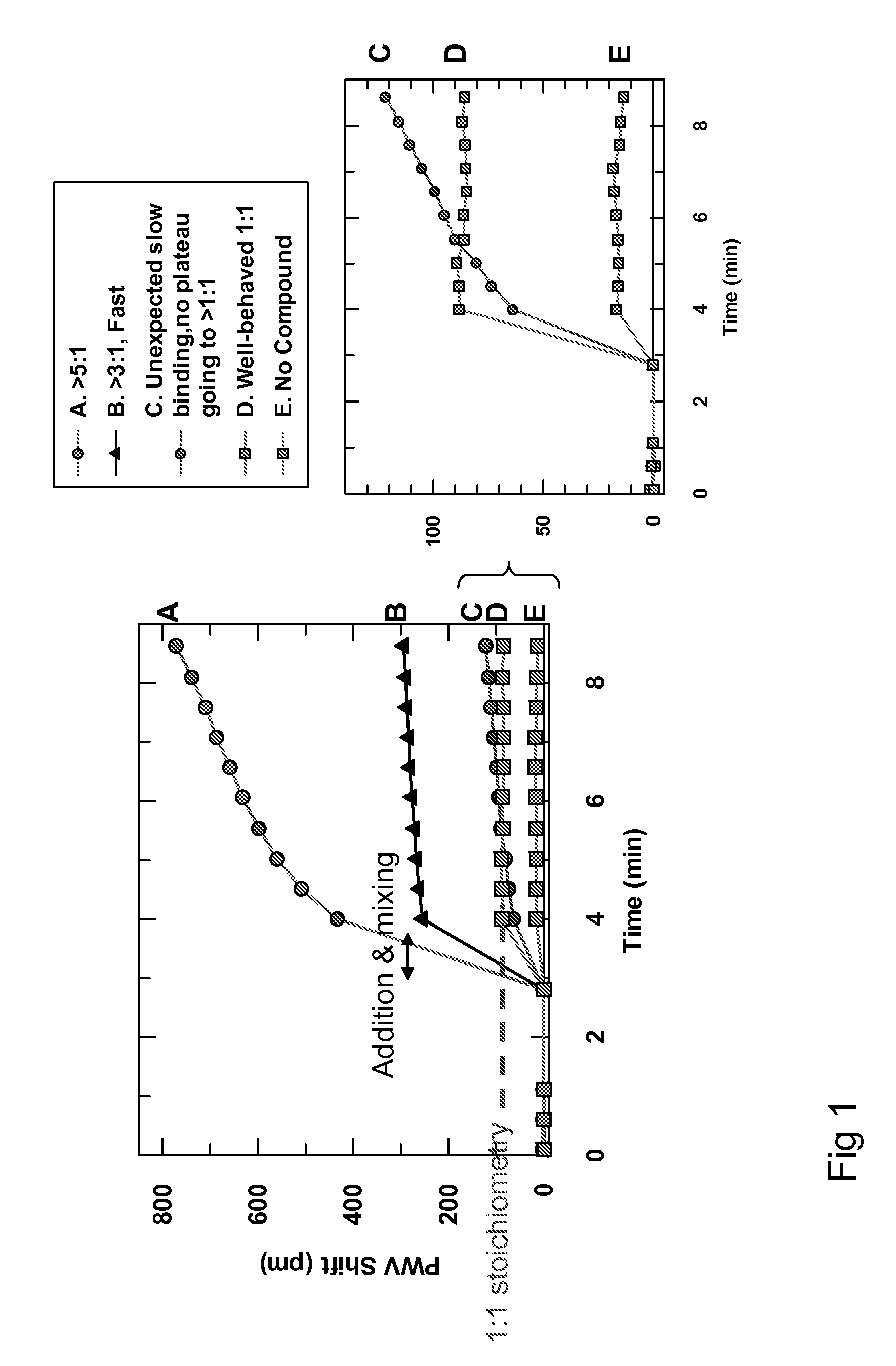Detection of Promiscuous Small Submicrometer Aggregates
- Summary
- Abstract
- Description
- Claims
- Application Information
AI Technical Summary
Benefits of technology
Problems solved by technology
Method used
Image
Examples
Embodiment Construction
[0017]As used herein, the singular forms “a,”“an”, and “the” include plural referents unless the context clearly dictates otherwise.
[0018]In one embodiment, the invention provides a method for detecting aggregate-forming particles and / or promiscuous inhibitor molecules or non-specific binding inhibition on a colorimetric resonant biosensor and / or a grating-based waveguide biosensor. See e.g., Cunningham et al., “Colorimetric resonant reflection as a direct biochemical assay technique,” Sensors and Actuators B, Volume 81, p. 316-328, Jan. 5, 2002; U.S. Pat. Publ. No. 2004 / 0091397; U.S. Pat. No. 6,958,131; U.S. Pat. No. 6,787,110; U.S. Pat. No. 5,738,825. Colorimetric resonant biosensors and grating-based waveguide biosensors are not surface plasmon resonant (SPR) biosensors. SPR biosensors have a thin metal layer, such as silver, gold, copper, aluminum, sodium, or indium. The metal must have conduction band electrons capable of resonating with light at a suitable wavelength. The SPR ...
PUM
 Login to View More
Login to View More Abstract
Description
Claims
Application Information
 Login to View More
Login to View More - R&D
- Intellectual Property
- Life Sciences
- Materials
- Tech Scout
- Unparalleled Data Quality
- Higher Quality Content
- 60% Fewer Hallucinations
Browse by: Latest US Patents, China's latest patents, Technical Efficacy Thesaurus, Application Domain, Technology Topic, Popular Technical Reports.
© 2025 PatSnap. All rights reserved.Legal|Privacy policy|Modern Slavery Act Transparency Statement|Sitemap|About US| Contact US: help@patsnap.com



